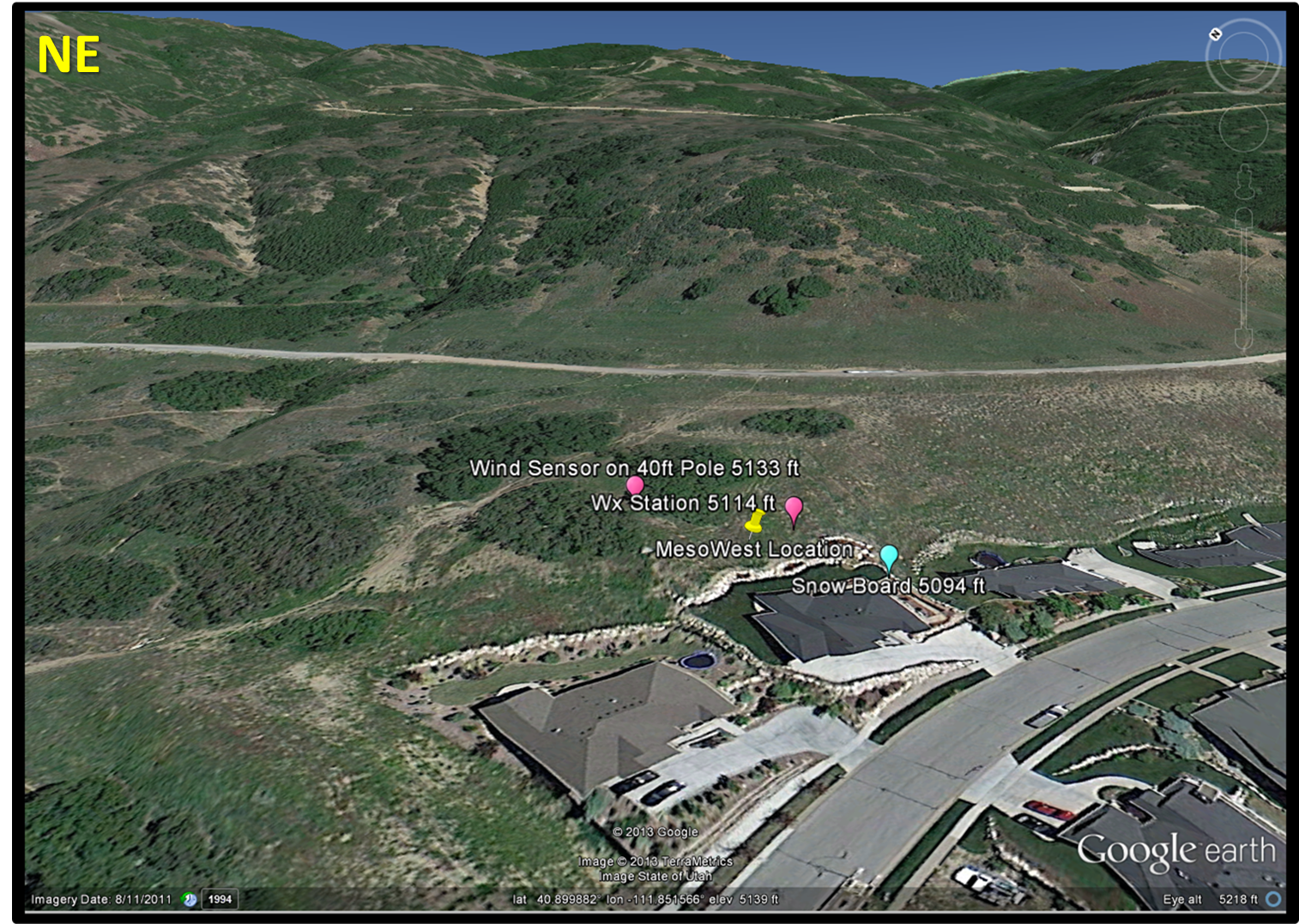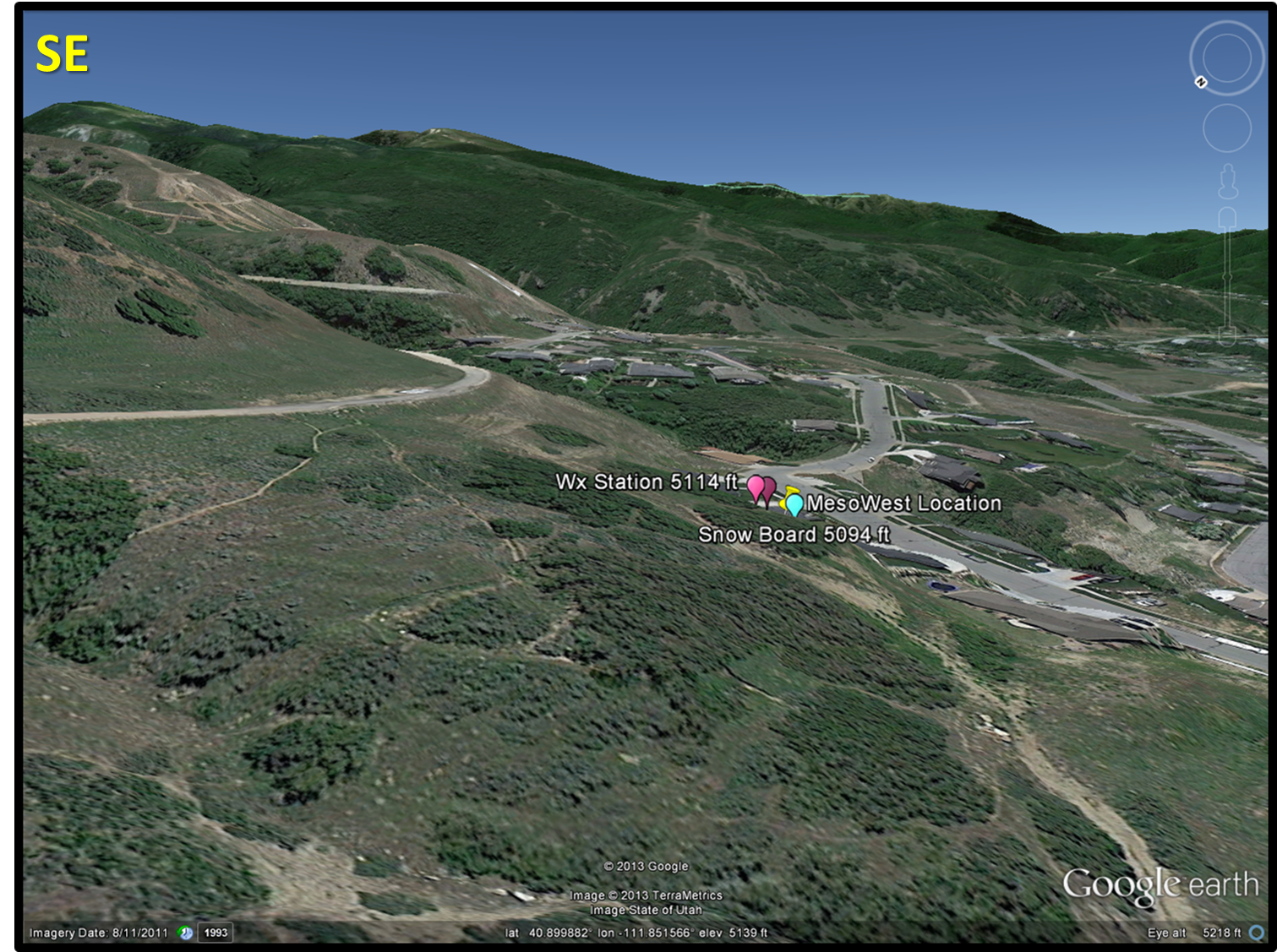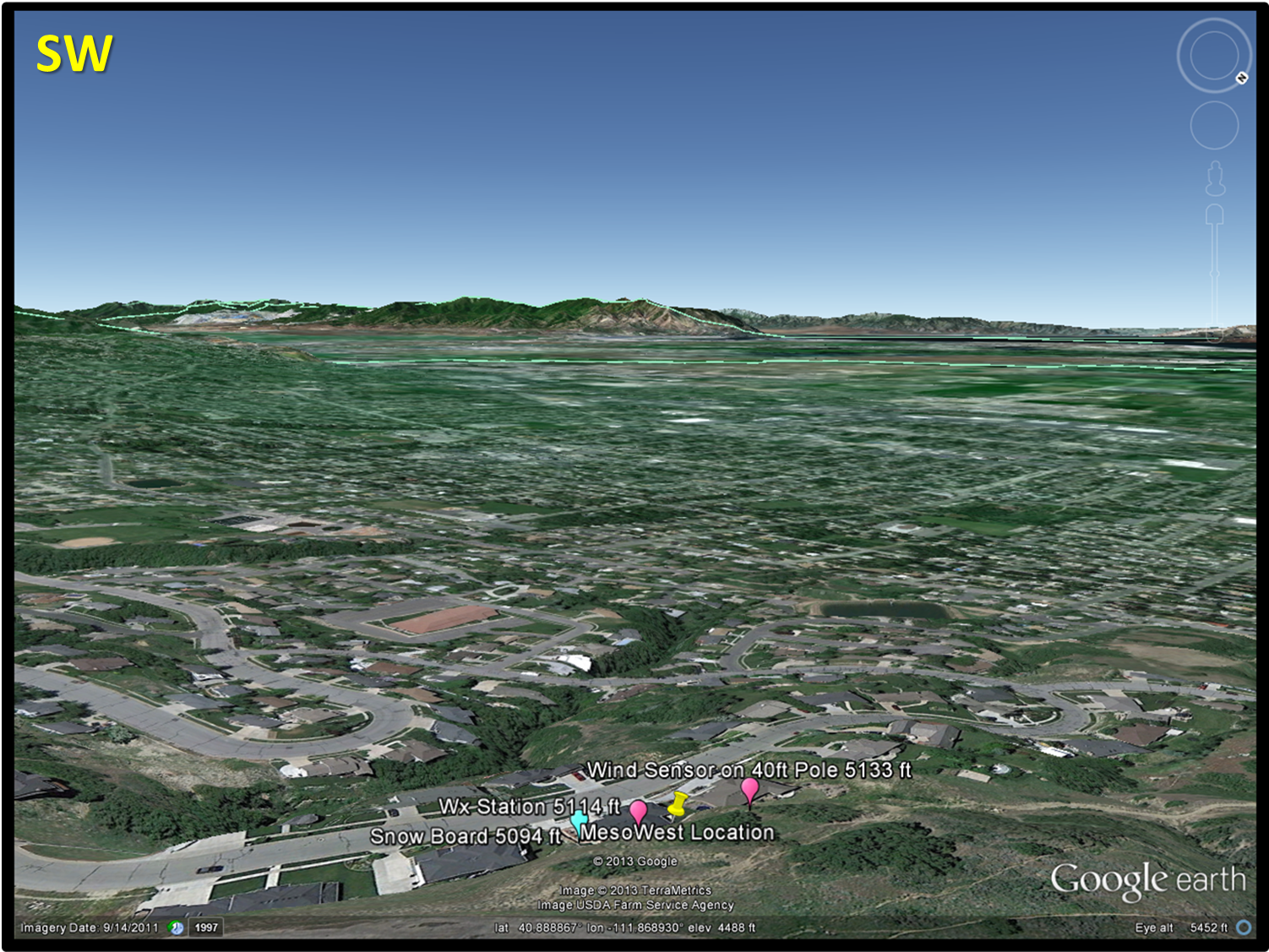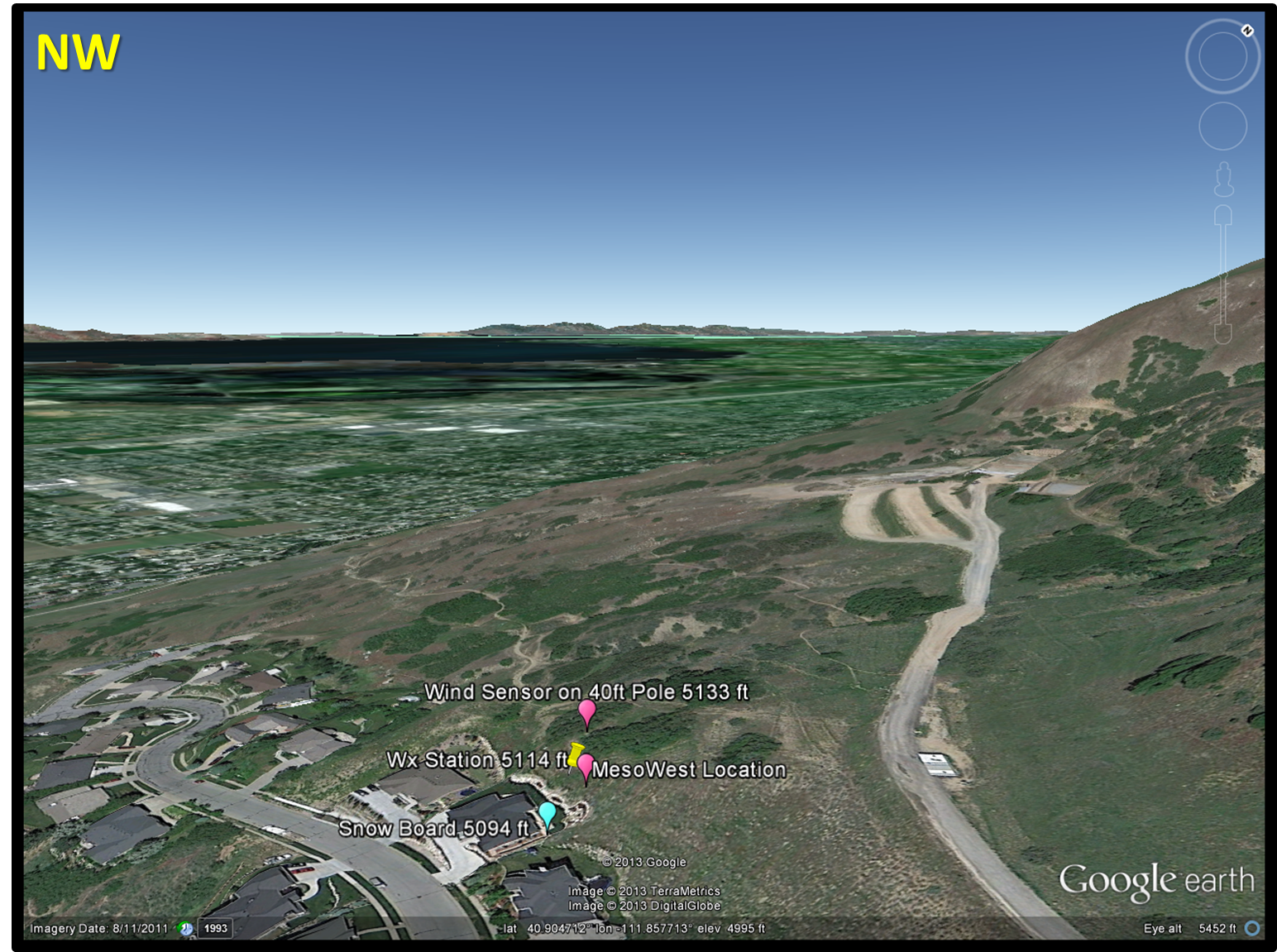
Looking NE, the obvious item of interest is the mountain side. While light nocturnal downslope winds may occur from this direction, NE is not expected to be a wind direction of interest.

There are several canyons of interest to the SE. For this reason, this direction is dominate at night especially with any flow of note. From the few downslope wind storms that have occurred in 2013, SE seems to be the main wind direction.

The site has the best exposure to the SW. Deep winter storms will trigger strong SW winds on approach.

Northwest features partial exposure toward the Great Salt Lake and Antelope Island. Cold fronts and convective outflows will usually result in NW winds, occasionally strong.

The setup as of April 2015. Just finished installing the new wind sensor on a fiberglass pole. The pole is 10m high (about 33ft), the official height for measuring wind. It sits well above the scrub oak, and has a perfect exposure to the East (Downslope windstorms) and S/SW well above the roofline of the houses below.

This pole is supported by 24 guy wires on 6 guy rings. The pole was purchased from http://www.mgs4u.com/fiberglass-push-up-mast.htm#telescoping and is the MK-6-HD model. Guy rope and rings were also purchased from this company.

The SE facing camera is just below the pole.

A view of the guy ropes. The pole is actually pretty darn straight.

But a slight bend can be observed from underneath. There is very little give in this pole, it feels sturdy.

I have 8 anchors in the ground, each with 3 guy ropes. They radiate in four directions from the pole, one a shorter distance than the other for the lower guy ropes.

East.

Southeast.

South.

Southwest.